The image below is a digital collage, meaning a Photoshop composite created by blending layers. As these collages go, this is a fairly simple piece. All the elements in the collage come from a single dSLR capture using my Nikon D300 (see below). So I’m able in this story to show where each element in the final digital collage comes from, how I generated the elements from the one capture, and how I put them together.
View this image larger.
The original of all three elements of this collage is an ISO 6400 photo of the underground pool at Hearst Castle shown below (here’s more info about the photo):
The final image is a triptych of three versions of this original photo. The middle image is the original photo with a duplicate version flipped vertically and layered on top, like so:
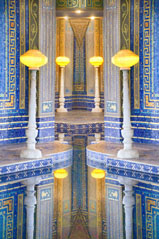
The left image is an inversion of the LAB A channel of the original image, like this:
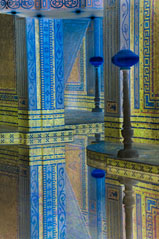
However, I didn’t like lights putting out an apparently blue light, so I painted the yellow lights from the original back over:
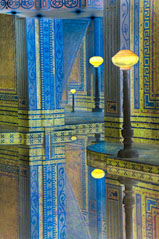
The right image is an inversion of the LAB B channel of the original image:
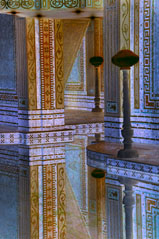
Once again, I painted over the lights (a black lamp isn’t any better than a blue lamp):
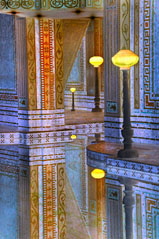
To combine the three “panels” of my triptych, I started a new image sized to be three times as wide as the original, and then I added each element as a separate layer.
With this kind of effort, one of the most difficult things is to know when to stop. I’ll be writing about knowing when to stop in another story.
Some related stories: When Is a Photo Not a Photo; Variations, Resistance to Spirals Is Futile; World without End.
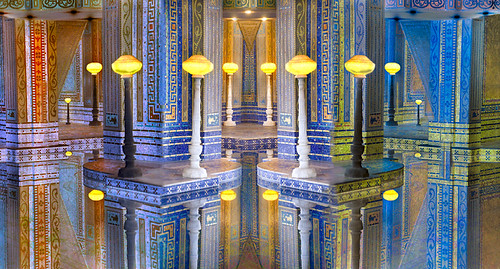
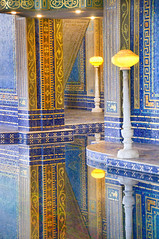
Pingback: Photoblog 2.0: » Photoblog 2.0 Archive: » Memory Palace
texbrandt
21 Feb 2008Harold,
the knowing when to stop is hard to learn I think because it is not a rule etched in stone. In the end I don’t believe there is one perfect stopping point for any project, there is only the getting to know yourself well enough to judge this effort as sufficient. Some of my most interesting work in times past has come about not so much from know when to stop, but from not knowing what else to do.
While surfing the web I came across a painter who does all his work in large scale digital painting, making thousands of layers for each picture. His knowing when to stop would not work at all for me.
The thing I like about doing digital art with photos or just starting with a blank file in photoshop is that if I save regularly I can have many stopping points- or in many cases many starting points.
Robert